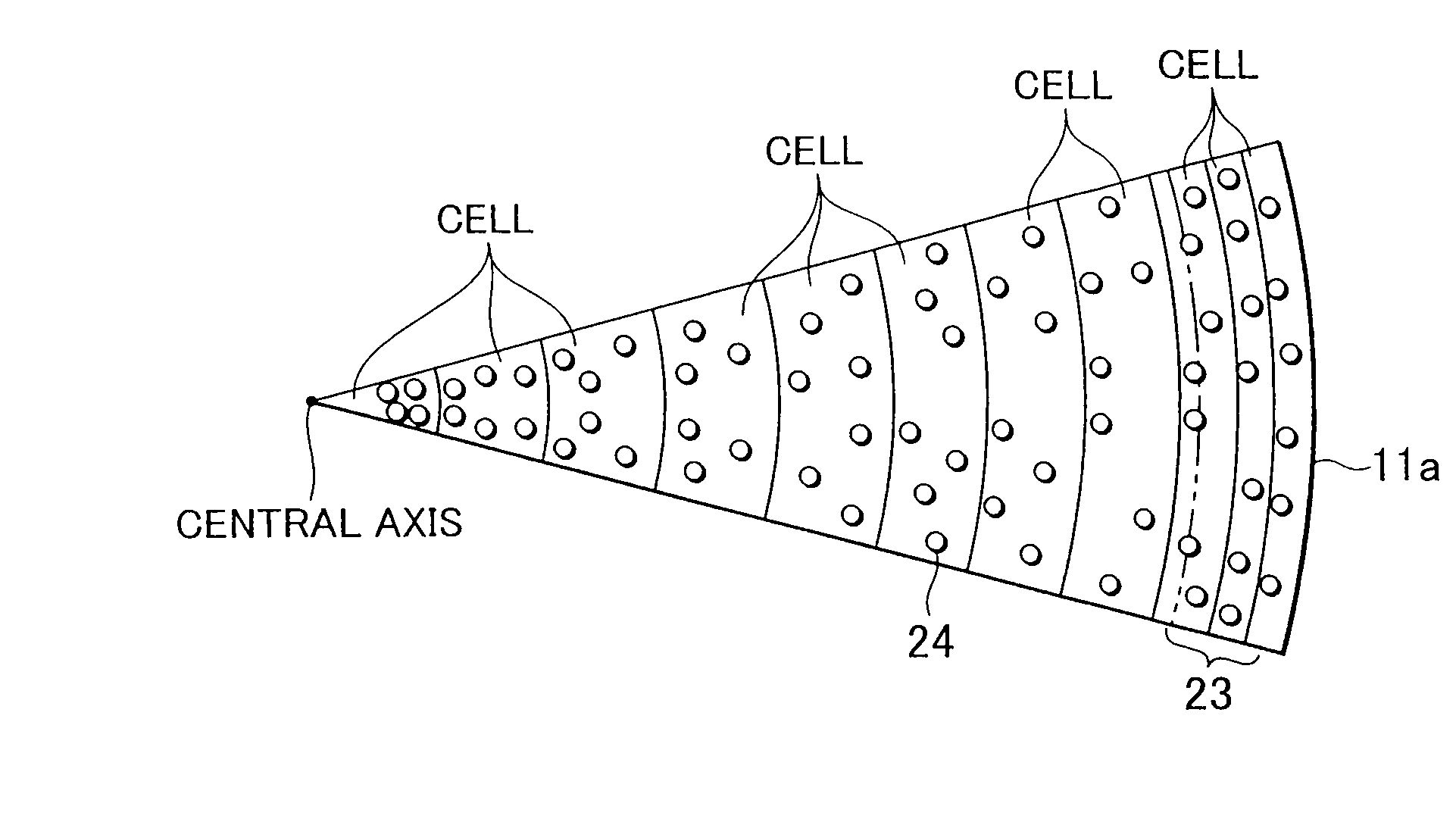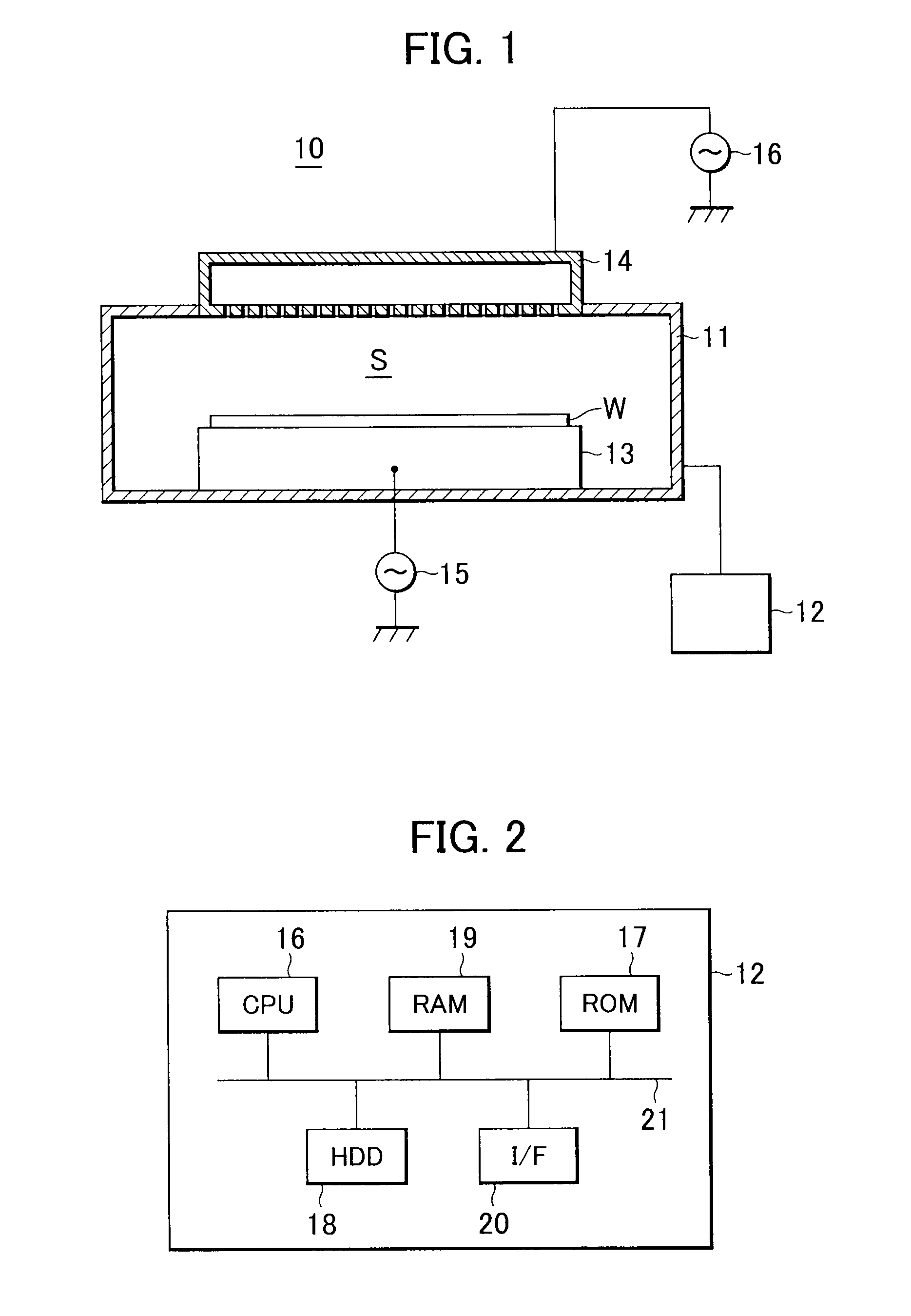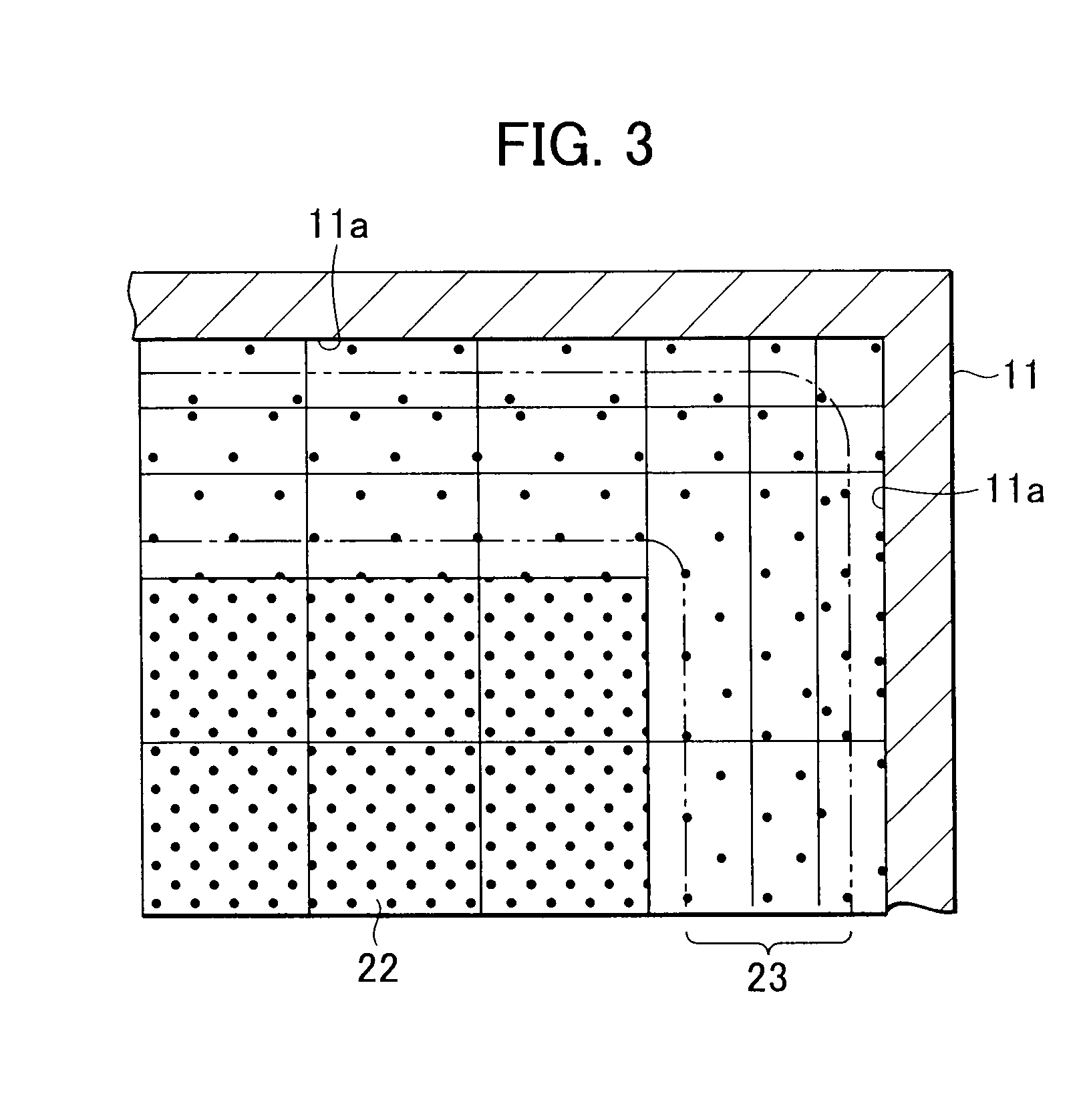Method of plasma particle simulation, storage medium, plasma particle simulator and plasma processing apparatus
a plasma particle and simulation technology, applied in plasma techniques, separation processes, nuclear engineering, etc., can solve the problems of large number of plasma particles contained in the housing chamber, poor observation accuracy, and large simulation time, so as to prevent the divergence of solutions
- Summary
- Abstract
- Description
- Claims
- Application Information
AI Technical Summary
Benefits of technology
Problems solved by technology
Method used
Image
Examples
first embodiment
[0041]First, an explanation will be made of a method of plasma particle simulation according to the present invention.
[0042]FIG. 1 is a cross-sectional view schematically illustrating a configuration of a plasma processing apparatus to which a method of plasma particle simulation according to the present embodiment.
[0043]In FIG. 1, a plasma processing apparatus 10 includes a housing chamber (chamber) 11 for housing a wafer W and a simulator 12 for performing plasma particle distribution prediction processing as a later-described method of plasma particle simulation.
[0044]The chamber 11 includes a susceptor 13 functioning as the mounting stage of the wafer W and disposed downwardly within the chamber 11, and a showerhead 14 disposed above the chamber 11 to supply a processing gas into the chamber 11. Since a radio-frequency power source 15 is connected to the susceptor 13, the susceptor 13 functions as a lower electrode for applying radio-frequency power to a space (hereinafter refer...
second embodiment
[0083]Next, an explanation will be made of a method of plasma particle simulation according to the present invention.
[0084]The present embodiment is basically the same in constitution and operation as the above-described first embodiment. Therefore, the same parts of the constitution and operation will not be described again, but only the different parts thereof will be described hereinafter.
[0085]FIG. 8 is a top view illustrating a part of a simulation model corresponding to a processing space set in implementation of a method of plasma particle simulation according to the present embodiment.
[0086]In FIG. 8, a simulation model is divided axisymmetrically with respect to the central axis of a chamber 11 into a plurality of cells. At this time, the volumes of cells near the central axis become small. Since the density of plasma particles 22 is constant in a portion corresponding to the bulk of plasma (portion including the vicinity of the central axis), the number of plasma particles...
PUM
 Login to View More
Login to View More Abstract
Description
Claims
Application Information
 Login to View More
Login to View More - R&D
- Intellectual Property
- Life Sciences
- Materials
- Tech Scout
- Unparalleled Data Quality
- Higher Quality Content
- 60% Fewer Hallucinations
Browse by: Latest US Patents, China's latest patents, Technical Efficacy Thesaurus, Application Domain, Technology Topic, Popular Technical Reports.
© 2025 PatSnap. All rights reserved.Legal|Privacy policy|Modern Slavery Act Transparency Statement|Sitemap|About US| Contact US: help@patsnap.com



